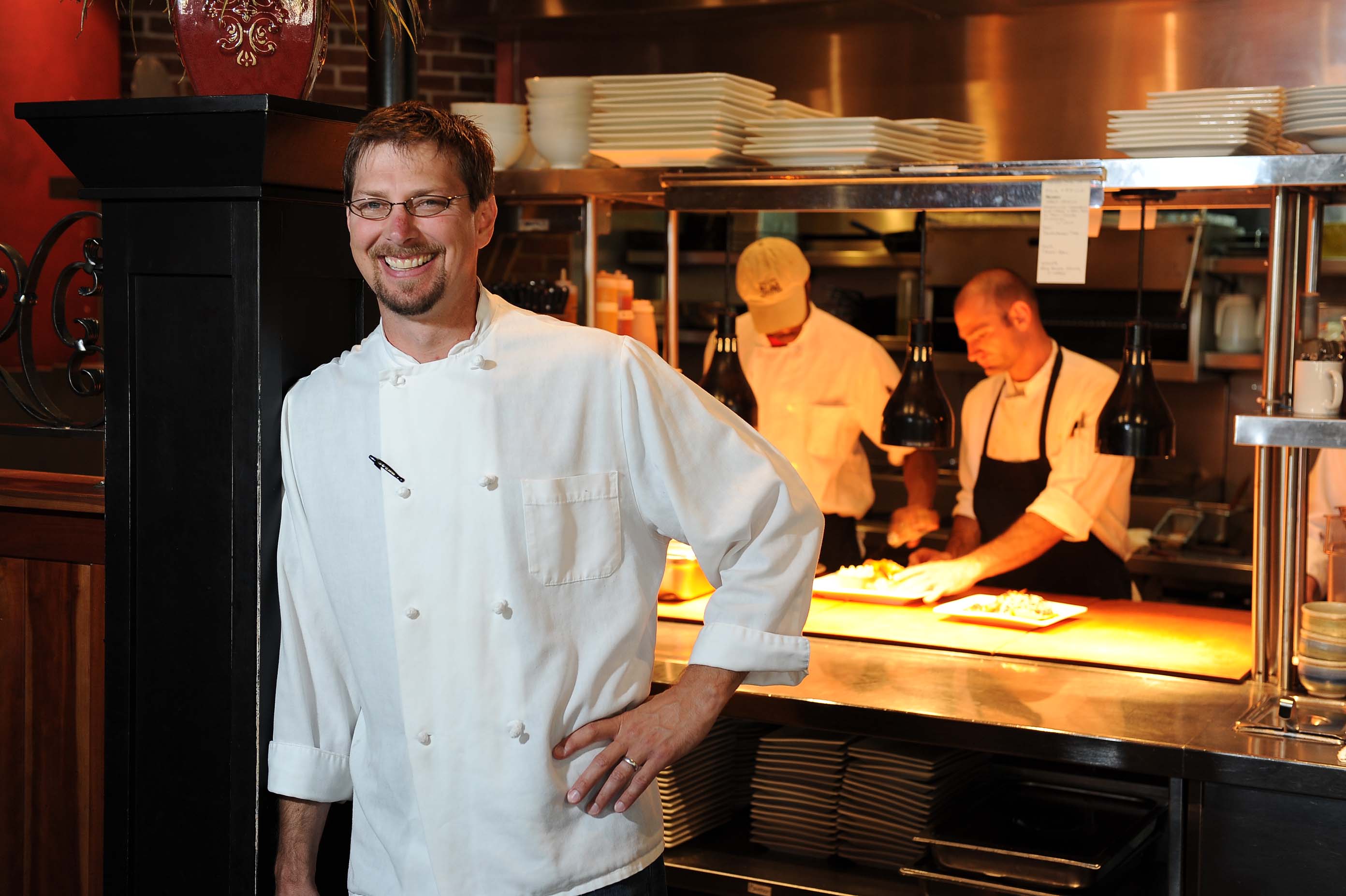
Serving Up Local Foods Using Old World Methods
“It’s just a café.”
“This type of restaurant was the first of its kind in the Ames area,” he says. “They say the coasts are five years ahead of us, but our ideas were right in line with what I was seeing on the West coast at the time.”
The restaurant was designed to have a neighborhood bistro feel with a menu grounded in local foods says Rettig (’94 food science and technology), who was executive chef at the time and has since become general manager.
The Café consists of a bakery and coffee-house, restaurant, bar and catering company. Cooking methods are Old World like making sausage in-house, smoking and curing meats, grilling over a wood fire and roasting in a stone oven. They bake artisanal breads and every pastry and dessert is made from scratch.
Rettig considers it a “chameleon.”
“We want people to see us differently. We’ve always wanted to be a neighborhood place for ice cream with the kids, a four-course meal in the evenings, or just a quick breakfast,” he says. “Some people see us as a fancy place, but our intention has simply been to serve good food and take good care of people.”
Developing a taste for the restaurant business
Rettig got his start in the restaurant business as a dishwasher at the Ames favorite, Aunt Maude’s. There he met the two men who would become his professional mentors and business partners at The Café: Bob Cummings and Pat Breen.
As he attended Iowa State, Rettig quickly worked his way to tending bar, then to the kitchen where he cooked alongside the head chef at Aunt Maude’s for three years.
“My ability to cook and the knowledge to do so was gained by trial and error, lots of interest and great teachers and critics,” Rettig says. “I was afforded the luxury of being able to bring in an idea and to work with it until success, or sometimes failure.”
He spent time as head chef and general manager at O’Malley and McGees restaurant in Ames, and as a sous-chef in two restaurants in Portland, Oregon, for several years before he reconnected with Cummings and Breen to create The Café.
Flavor is always in season
The Café’s seasonal menu runs on a six-week cycle.
“Menu ideas come from everyone involved. We have great arguments about why something should or should not be on the menu,” Rettig says with a smile. “We find ideas from websites, trade magazines, newspapers, all over.”
One thing they all agree on is the use of local produce.
“Using local foods has a cause-and-effect relationship on the menu. It forces us to change with availability so that can be challenging. Plans can be ruined based on crop performance. But, the quality is better. An heirloom tomato needs to be picked and served when ripe, as with any vegetable,” says Rettig.
The Café orders food from farmers daily during the growing season and often produce is delivered the same day it is picked. They work with about 25 different area growers. During the winter months, Rettig and his colleagues meet with farmers to plan for the next season.
“They come armed with seed catalogs and we have fun picking out new and unusual possibilities that they or we may like to try,” he says.
Rettig enjoys the focus on fresh, local produce but values food producers at every scale. “Commodity beef and other products have a place here. Our hamburger is local, but our steaks aren’t from a single producer,” he says. “Plus, we’re in a state you can’t grow certain ingredients year-round. We can’t get local olive oil and I need to supplement using canned tomatoes in the off season for example.”
The Café’s approach to food has proven successful, says Rettig, “we couldn’t have drawn a more perfect growth ladder.”
Today staff includes an executive chef, two sous chefs and others totaling 95 employees—of which half are university students. The Café serves an average of 800 customers per day and it is common to find a wait for a table any day of theweek during peak hours.
Click here for Rettig’s Lamb Ragu and Pasta recipe



